 The energy market is complex and is a prime example of an oligopoly: a few dominant firms in the market and interdependence between the suppliers. Over 95% of the market is supplied by the so-called ‘big six’ and collectively they generate 80% of the country’s electricity. There are two further large generators (Drax Power Limited and GDF Suez Energy UK), meaning the electricity generation is also an oligopoly.
The energy market is complex and is a prime example of an oligopoly: a few dominant firms in the market and interdependence between the suppliers. Over 95% of the market is supplied by the so-called ‘big six’ and collectively they generate 80% of the country’s electricity. There are two further large generators (Drax Power Limited and GDF Suez Energy UK), meaning the electricity generation is also an oligopoly.
This sector has seen media attention for some years, with criticisms about the high profits made by suppliers, the high prices they charge and the lack of competition. Numerous investigations have taken place by Ofgem, the energy market regulator, and the latest development builds on a simple concept that has been a known problem for decades: barriers to entry. It is very difficult for new firms to enter this market, in particular because of the vertically integrated nature of the big six. Not only are they the suppliers of the energy, but they are also the energy generators. It is therefore very difficult for new suppliers to enter the market and access the energy that is generated.
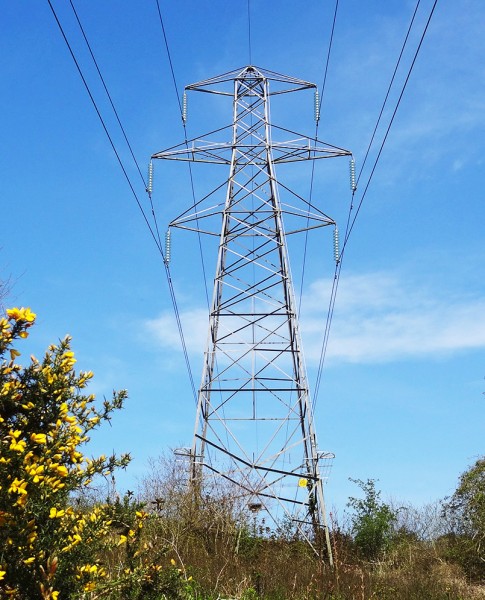 Ofgem’s new plans will aim to reduce the barriers to entry in the market and thus make it easier for new firms to enter and act as effective competitors. The big six energy generators are vertically integrated companies and thus effectively sell their energy to themselves, whereas other suppliers have to purchase their energy before they can sell it. The regulator’s plans aim to improve transparency by ensuring that wholesale power prices are published two years in advance, thus making it easier for smaller companies to buy energy and then re-sell it. Andrew Wright, the Chief Executive of Ofgem, said:
Ofgem’s new plans will aim to reduce the barriers to entry in the market and thus make it easier for new firms to enter and act as effective competitors. The big six energy generators are vertically integrated companies and thus effectively sell their energy to themselves, whereas other suppliers have to purchase their energy before they can sell it. The regulator’s plans aim to improve transparency by ensuring that wholesale power prices are published two years in advance, thus making it easier for smaller companies to buy energy and then re-sell it. Andrew Wright, the Chief Executive of Ofgem, said:
These reforms give independent suppliers, generators and new entrants to the market, both the visibility of prices, and [the] opportunities to trade, [that] they need to compete with the largest energy suppliers…Almost two million customers are with independent suppliers, and we expect these reforms to help these suppliers and any new entrants to grow.
Although such reforms will reduce the barriers to entry in the market and thus should aim to increase competition and hence benefit consumers, many argue that the reforms don’t go far enough and will have only minor effects on the competitiveness in the market. There are still calls for further reforms in the market and a more in-depth investigation to ensure that consumers are really getting the best deal. The following articles consider this ongoing saga and this highly complex market.
Ofgem ramps up scrutiny of Big six accounts Telegraph, Denise Roland (27/2/14)
 Energy firms told to trade fairly with smaller rivals BBC News (26/2/14)
Energy firms told to trade fairly with smaller rivals BBC News (26/2/14)
Energy regulator Ofgem force trading rules on ‘big six’ suppliers Financial Times, Andy Sharman (26/2/14)
Ed Davey calls on Ofgem to investigate energy firms’ gas profits The Guardian, Sean Farrell and Jennifer Rankin (10/2/14)
UK forces big power companies to reveal wholesale prices Reuters (26/2/14)
Watchdog unveils new rules on Big six energy prices Independent, Tom Bawden (26/2/14)
Energy Bills: New rules to boost competition Sky News, (26/2/14)
Questions
- What are the characteristics of an oligopoly?
- Explain the reason why the vertically integrated nature of the big six energy companies creates a barrier to the entry of new firms.
- What are the barriers to entry in (a) the electricity supply market and (b) the electricity generating market?
- What action has Ofgem suggested to increase competition in the market? How effective are the proposals likely to be/
- Why is there a concern about liquidity in the market?
- If barriers to entry are reduced, how will this affect competition in the market? How will consumers be affected?
- Why are there suggestions that Ofgem’s proposals don’t go far enough?
 The UK electricity supply market is an oligopoly. Over 95% of the market is supplied by the ‘big six’: British Gas (Centrica), EDF Energy, E.ON, npower (RWE), Scottish Power (Iberdrola) and SSE. The big six also generate much of the electricity they supply; they are vertically integrated companies. Between them they generate nearly 80% of the country’s electricity. There are a further two large generators, Drax Power Limited and GDF Suez Energy UK, making the generation industry an oligopoly of eight key players.
The UK electricity supply market is an oligopoly. Over 95% of the market is supplied by the ‘big six’: British Gas (Centrica), EDF Energy, E.ON, npower (RWE), Scottish Power (Iberdrola) and SSE. The big six also generate much of the electricity they supply; they are vertically integrated companies. Between them they generate nearly 80% of the country’s electricity. There are a further two large generators, Drax Power Limited and GDF Suez Energy UK, making the generation industry an oligopoly of eight key players.
Ofgem, the energy market regulator, has just published a report on the wholesale electricity market, arguing that it is insufficiently liquid. This, argues the report, acts as a barrier to entry to competitor suppliers. It thus proposes measures to increase liquidity and thereby increase effective competition. Liquidity, according to the report, is:
… the ability to quickly buy or sell a commodity without causing a significant change in its price and without incurring significant transaction costs. It is a key feature of a well-functioning market. A liquid market can also be thought of as a ‘deep’ market where there are a number of prices quoted at which firms are prepared to trade a product. This gives firms confidence that they can trade when needed and will not move the price substantially when they do so.
 A liquid wholesale electricity market ensures that electricity products are available to trade, and that their prices are robust. These products and price signals are important for electricity generators and suppliers, who need to trade to manage their risks. Liquidity in the wholesale electricity mark et therefore supports competition in generation and supply, which has benefits for consumers in terms of downward pressure on bills, better service and greater choice.
A liquid wholesale electricity market ensures that electricity products are available to trade, and that their prices are robust. These products and price signals are important for electricity generators and suppliers, who need to trade to manage their risks. Liquidity in the wholesale electricity mark et therefore supports competition in generation and supply, which has benefits for consumers in terms of downward pressure on bills, better service and greater choice.
So how can liquidity be increased? Ofgem is proposing that the big six publish prices for two years ahead at which they are contracting to purchase electricity from generators in long-term contracts. These bilateral deals with generators are often with their own company’s generating arm. Publishing prices in this way will allow smaller suppliers to be able to seek out market opportunities. The generating companies will not be allowed to refuse to contract to supply smaller companies at the prices they are being forced to publish.
In addition, Ofgem is proposing that generators would have to sell 20% of output in the open market instead of through bilateral deals. As it is, however, some 30% of output is currently auctioned on the wholesale spot market (i.e. the market for immediate use).
But it is pricing transparency plus small suppliers being able to gain access to longer-term contracts that are the two key elements of the proposed reform.
Articles
UK utilities face having to disclose long-term deals Reuters, Karolin Schaps and Rosalba O’Brien (12/6/13)
Ofgem set to ‘break stranglehold’ in the energy market BBC News, John Moylan (12/6/13)
 Ofgem plan ‘to end energy stranglehold’ BBC Today Programme, John Moylan and Ian Marlee (12/6/13)
Ofgem plan ‘to end energy stranglehold’ BBC Today Programme, John Moylan and Ian Marlee (12/6/13)
Ofgem outlines proposals to ‘break stranglehold’ of big six energy suppliers on electricity market The Telegraph (12/6/13)
Ofgem widens investigation into alleged rigging of gas and power markets The Guardian, Terry Macalister (6/6/13)
Ofgem moves to break stranglehold of ‘big six’ energy suppliers Financial Times, Guy Chazan (12/6/13)
Ofgem to crackdown on Big Six energy suppliers in bid to cut electricity prices Independent, Simon Read (12/6/13)
Reports and data
Opening up Electricity Market to Effective Competition Ofgem Press Release (12/6/13)
Wholesale power market liquidity: final proposals for a ‘Secure and Promote’ licence condition – Draft Impact Assessment Ofgem (12/6/13)
Electricity statistics Department of Energy & Climate Change
The Dirty Half Dozen Friends of the Earth (Oct 2011)
Questions
- What barriers to entry exist in (a) the wholesale and (b) the retail market for electricity?
- Distinguish between spot and forward markets. Why is competition in forward markets particularly important for small suppliers of electricity?
- How will ‘liquidity’ be increased by the measures Ofgem is proposing?
- To what extent does vertical integration in the energy industry benefit consumers of electricity?
- What is a price reporting agency (PRA)? What anti-competitive activities have been taking place in the short-term energy market and why may PRAs not be ‘fit for purpose’?
- Do you think that the measures Ofgem is proposing will ensure that the big generators trade fairly with small suppliers? Explain.
- What are the dangers in the proposals for the large generators?
 Comet, Peacocks, Woolworths, JJB, Jessops and now HMV – they all have one thing in common. The recession has hit them so hard that they entered administration. HMV is the latest high street retailer to bring in the administrators, despite insisting that it does have a future on the UK’s high streets. With debts of £176m and huge competition from online retailers, the future of HMV is very uncertain.
Comet, Peacocks, Woolworths, JJB, Jessops and now HMV – they all have one thing in common. The recession has hit them so hard that they entered administration. HMV is the latest high street retailer to bring in the administrators, despite insisting that it does have a future on the UK’s high streets. With debts of £176m and huge competition from online retailers, the future of HMV is very uncertain.
Over the past decades, companies such as Amazon, ebay, LoveFilm, Netflix and apple have emerged providing very stiff competition to the last remaining high street seller of music and DVDs. People have been turning more and more to the internet to do their shopping, with cheaper prices and greater choice. The speed of delivery, which in the past may have been a disadvantage of buying from somewhere like Amazon, is now barely an obstacle and these substitute companies have created a difficult environment for high street retailers to compete in. Despite going into administration, it’s not necessarily the end of the much-loved HMV. Its Chief Executive said:
We remain convinced we can find a successful business outcomes. We want to make sure it remains on the high street … We know our customers fell the same way.
 While the recession has undoubtedly affected sales at HMV, is this the main reason for its demise or are other factors more relevant? As discussed, online retailers have taken over the DVD and music industry and with downloading increasing in popularity and CD/DVDs on sale in numerous locations, including supermarket chains, HMV has felt the competitive pressure and its place on the high street has come into question. As Neil Saunders, the Managing Director of Conlumino said:
While the recession has undoubtedly affected sales at HMV, is this the main reason for its demise or are other factors more relevant? As discussed, online retailers have taken over the DVD and music industry and with downloading increasing in popularity and CD/DVDs on sale in numerous locations, including supermarket chains, HMV has felt the competitive pressure and its place on the high street has come into question. As Neil Saunders, the Managing Director of Conlumino said:
By our own figures, we forecast that by the end of 2015 some 90.4 per cent of music and film sales will be online. The bottom line is that there is no real future for physical retail in the music sector.
Further to this, prices have been forced downwards and HMV, having to pay high fixed costs to retain their place on the high streets, have been unable to compete and remain profitable. Another contributing factor could be an outdated management structure, which has not responded to the changing times. Whatever the cause, thousands of jobs have been put at risk. Even if buyers are found, some store closures by the administrators, Deloitte, seem inevitable. Customer gift vouchers have already become worthless and further losses to both workers and customers seem likely. It is thought that there will be many interested buyers and huge support from suppliers, but the former is likely to remain a relatively secretive area for some time.

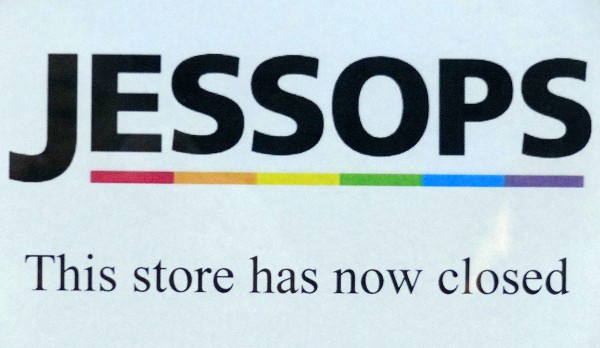 This latest high street disaster will undoubtedly raise many questions. One theory about recovery from a recession looks at the need for many businesses to go under until the fittest are left and there is sufficient scope for new businesses to emerge.
This latest high street disaster will undoubtedly raise many questions. One theory about recovery from a recession looks at the need for many businesses to go under until the fittest are left and there is sufficient scope for new businesses to emerge.
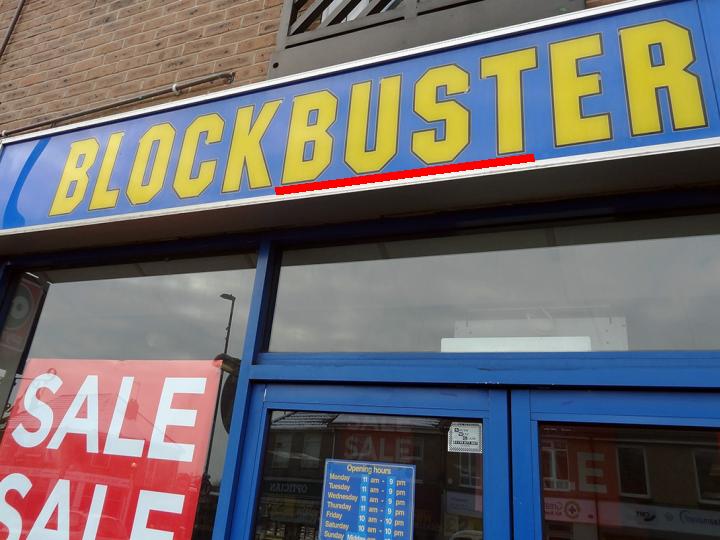 Could it be that the collapse of companies such as Woolworths, HMV, Comet, Jessops and Blockbuster is an essential requirement for economic recovery? Or was the recession irrelevant for HMV? Was its collapse an inevitable consequence of the changing face of Britain’s high streets and if so, what does the future hold for the high street retailers? The following articles consider the demise of HMV.
Could it be that the collapse of companies such as Woolworths, HMV, Comet, Jessops and Blockbuster is an essential requirement for economic recovery? Or was the recession irrelevant for HMV? Was its collapse an inevitable consequence of the changing face of Britain’s high streets and if so, what does the future hold for the high street retailers? The following articles consider the demise of HMV.
HMV: a visual history BBC News (15/1/13)
Chief executive says ‘HMV still has a place on the high street’, as customers are told their gift vouchers are worthless Independent, James Thompson (15/1/13)
Potential buyers circle stricken HMV Financial Times, Andrea Felsted (15/1/13)
HMV and independents to urged to work together to save in-store music market BBC News, Clive Lindsay (15/1/13)
HMV record chain was besest by digital downloads and cheap DVDs The Guardian (15/1/13)
The death of traditional retailers like HMV started when we caught on to one-click and the joy of owning DVDs wore thin Independent, Grace Dent (15/1/13)
HMV shoppers: ‘I’m disappointed, but it’s understandable why they went bust The Guardian, James Brilliant (15/1/13)
HMV: Record labels could take HMV back to its 1920 roots The Telegraph, Graham Ruddick (15/1/13)
HMV’s future seen as handful of stores and website Reuters, Neil Maidment and James Davey (15/1/13)
HMV leaves social gap in high street BBC News, Robert Plummer (15/1/13)
Is there good news in HMV’s collapse? BBC News, Robert Peston (15/1/13)
Is it game over for UK retail? The Guardian, Larry Elliott (18/1/13)
High Street retailers: Who has been hit hardest? BBC News (16/1/13)
Questions
- What are the main reasons behind the collapse of HMV?
- Use a diagram to illustrate the impact the companies such as Amazon and Tesco have had on costs and prices in the entertainment industry.
- Has the value we place on owning DVDs truly changed or have other factors led to larger purchases of online entertainment?
- Why is online retail providing such steep competition to high street retailers?
- Explain why it can be argued that economic recovery will only take place after a certain number of businesses have gone into administration.
- To what extent do you think HMV’s collapse is due to its failure to adapt to changing social circumstances?
- Briefly outline the wider economic implications of the collapse of a company such as HMV. Think about managers, employees, suppliers, customers and other competitors, as well as other high street retailers.
- In which market structure would you place the entertainment industry? Explain your answer. Has this contributed to the demise of HMV?
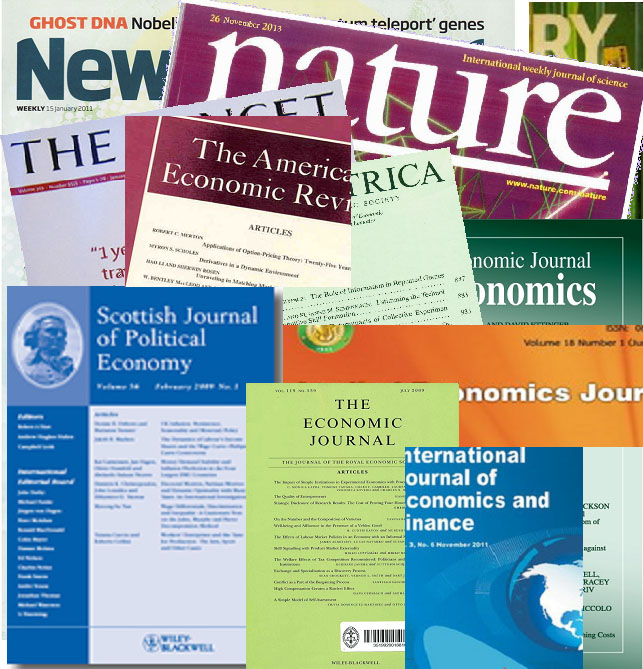 Academic research is encouraged by universities. Indeed, the number and quality of research publications is the most important criterion for promotion in many universities.
Academic research is encouraged by universities. Indeed, the number and quality of research publications is the most important criterion for promotion in many universities.
Periodically university research in the UK is publicly assessed. The latest assessment is known as the Research Excellence Framework (REF) and will be completed in 2014. Most research that will be considered by the REF is published in peer-reviewed journals. Most of these journals are subscription based. Universities pay large amounts of money in subscriptions.
In recent years there has been much criticism by both academics and universities about the high cost of such subscriptions. In a movement dubbed the Academic Spring, pressure has mounted for journal articles to be made available free of charge – i.e. on open access.
The government too has been concerned that the results of publicly-funded research has been disappearing behind ‘paywalls’ and hence not available free to people outside the universities which subscribe to such journals. Indeed, no single university can afford licences for all the 25,000 peer-reviewed journals currently being published. As a result, the government set up a committee under the chair of Professor Janet Finch to examine alternative ways of making research more accessible. The committee has just published its report.
It advocates an expansion of open-access journals:
The principle that the results of research that has been publicly funded should be freely accessible in the public domain is a compelling one, and fundamentally unanswerable…
Instead of relying on subscription revenues provided by or on behalf of readers, most [open-access journals] charge a fee to authors…before an article is published. Access for readers is then free of charge, immediately on publication, and with very few restrictions on use and re-use.
Under this model, universities would essentially pay to have their academics’ articles published rather than paying to purchase the journal. Alternatively, research councils could fund the publication of articles based on research already funded by them.
Many people go further. They argue that authors ought to be able to have their published research in any journal made freely available, after an embargo period, through their university’s website.
So is the current pricing model the best for encouraging research and for disseminating its findings? Or is open access a better model – and if so, of what form? Or would it discourage publishers and lead, in the end, to less being published or to a less rigorous peer review process? The questions are ones of pricing, incentives, choices and investment – the questions that economists are qualified to consider.
Articles
Open access may require funds to be rationed Times Higher Education, Paul Jump (21/6/12)
Set science free from publishers’ paywalls New Scientist, Stephen Curry (19/6/12)
Scientists must make research an open book Independent, Martin Hickman (18/6/12)
Report calls on government to back open access science BBC News, Pallab Ghosh (19/6/12)
Open access is the future of academic publishing, says Finch report Guardian, Alok Jha (19/6/12)
Open access to science – its implications discussed in UK raport ZME Science (19/6/12)
UK move to ‘open access’ in publishing Phys.Org, Justin Norrie (20/6/12)
Report
Finch Group Report: Overview Research Information Network (June 2012)
Finch Group Report: Executive Summary Research Information Network (June 2012)
Finch Group Report: Full Report Research Information Network (June 2012)
Questions
- Explain the difference between the ‘gold’ and ‘green’ models of open-access journal article publishing?
- What externalities are involved in journal publication? What are the implications of this for socially efficient pricing?
- How could journal publication be made profitable under an open-access system?
- What are the incentive effects for (a) academics and (b) universities of ranking journals? Does the REF, whereby research articles are judged on their own merits, overcome problems of ranking journals?
- Does the existence of journal rankings allow the top journals in each discipline to maintain a position of market power? How is this likely to impact on journal or article pricing?
- How would university finances be affected by a move towards gold open access journals (a) in the short term; (b) in the long term?
- Would it be in universities’ interests to produce their own open-access journals?
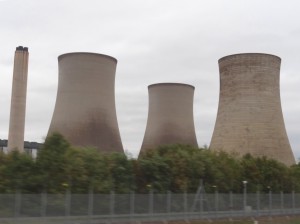 Centrica, owners of British Gas, has warned that electricity and gas prices in the UK are set to rise in the autumn. Centrica blames this on the expected rise in the costs of wholesale gas and other non-energy inputs.
Centrica, owners of British Gas, has warned that electricity and gas prices in the UK are set to rise in the autumn. Centrica blames this on the expected rise in the costs of wholesale gas and other non-energy inputs.
One of the other ‘big six’ energy suppliers, E.On, has responded by saying that it will not raise energy prices this year. Whether it will raise prices after 1 Jan next year remains to be seen.
Last autumn, household energy prices rose substantially: between 15.4% and 18% for gas and between 4.5% and 16% for electricity. This spring, in response to lower wholesale energy prices, suppliers cut prices for either electricity or gas (but not both) by around 5%.
The government and various pressure groups are encouraging consumers to use price comparison sites to switch to a cheaper supplier. The problem with this is that supplier A may be cheaper than supplier B one month, but B cheaper than A the next. Nevertheless, switching does impose some degree of additional competitive pressure on suppliers.
More powerful pressure could be applied by ‘collective switching’. This is where a lot of people switch via an intermediary company, which sources a deal from an energy supplier. This collective buying is a form of countervailing power to offset the oligopoly power of the suppliers. Such schemes are being encouraged by the Energy Minister, Ed Davey.
The other approach, apart from doing nothing, is for Ofgem, the energy regulator, to impose tough conditions on pricing. But at present, Ofgem’s approach has been to try to make the market more competitive (see also), rather than regulating prices.
British Gas owner Centrica warns of higher energy bills BBC News (11/5/12)
E.ON to keep residential energy prices unchanged in 2012 Reuters, Adveith Nair (14/5/12)
E.ON promises to hold energy prices for 5million customers in 2012 This is Money, Tara Evans (14/5/12)
British Gas owner Centrica feels cold blast from critics ShareCast, John Harrington (11/5/12)
Gas and electricity price battle lines drawn BBC News (14/5/12)
Taking on the energy giants: The co-operative insurgency gains ground Left Foot Forward, Daniel Elton (11/5/12)
Group Energy Buying hits the UK Headlines Spend Matters UK/Europe, Peter Smith (11/5/12)
Think tank calls for competition to break Big Six rip-off Energy Live News, Tom Gibson (30/4/12)
Collective switching will not fix the UK’s broken energy market Guardian, Reg Platt (27/4/12)
Make your own small switch for cheaper energy The Telegraph, Rosie Murray-West (14/5/12)
Questions
- What are the barriers to entry in the electricity supply market?
- How competitive is the retail energy market at present?
- To what extent do price comparison sites put pressure on energy companies to reeduce prices or limit price increases?
- What scope is there for collective buying of gas and electricity from the six energy suppliers by (a) households; (b) firms?
- Assess Ofgem’s package of proposals for a simpler and more competitive energy market.
 The energy market is complex and is a prime example of an oligopoly: a few dominant firms in the market and interdependence between the suppliers. Over 95% of the market is supplied by the so-called ‘big six’ and collectively they generate 80% of the country’s electricity. There are two further large generators (Drax Power Limited and GDF Suez Energy UK), meaning the electricity generation is also an oligopoly.
The energy market is complex and is a prime example of an oligopoly: a few dominant firms in the market and interdependence between the suppliers. Over 95% of the market is supplied by the so-called ‘big six’ and collectively they generate 80% of the country’s electricity. There are two further large generators (Drax Power Limited and GDF Suez Energy UK), meaning the electricity generation is also an oligopoly. Ofgem’s new plans will aim to reduce the barriers to entry in the market and thus make it easier for new firms to enter and act as effective competitors. The big six energy generators are vertically integrated companies and thus effectively sell their energy to themselves, whereas other suppliers have to purchase their energy before they can sell it. The regulator’s plans aim to improve transparency by ensuring that wholesale power prices are published two years in advance, thus making it easier for smaller companies to buy energy and then re-sell it. Andrew Wright, the Chief Executive of Ofgem, said:
Ofgem’s new plans will aim to reduce the barriers to entry in the market and thus make it easier for new firms to enter and act as effective competitors. The big six energy generators are vertically integrated companies and thus effectively sell their energy to themselves, whereas other suppliers have to purchase their energy before they can sell it. The regulator’s plans aim to improve transparency by ensuring that wholesale power prices are published two years in advance, thus making it easier for smaller companies to buy energy and then re-sell it. Andrew Wright, the Chief Executive of Ofgem, said: Energy firms told to trade fairly with smaller rivals BBC News (26/2/14)
Energy firms told to trade fairly with smaller rivals BBC News (26/2/14)





